Arctic Cruise.
By William J. Mayes, Editor of Sea Lines, The Ocean Liner Society (UK).
Oceanwide Expeditions, a company that has been providing expedition cruises on its own converted ships or on chartered ships for 25 years, finally got its first new ship in May 2019. Appropriately, the maiden voyage of this Dutch company’s new ship, Hondius, started in Vlissingen, in The Netherlands.
Hondius, named after the 16th-century Flemish engraver and cartographer, is the world’s first cruise ship to be built to the new Polar Class 6 specification, designed to withstand exposure to medium first year ice in summer and autumn.
Joining the Ship in Scotland
On this Arctic cruise, which I joined in Aberdeen, Scotland, we encountered and dealt with ice up to four feet thick, often pushing it out of the way, but just as often by driving straight through it in a spectacular fashion.
Wildlife spotting is a prime activity, and the chart outside the lounge listed all sorts of water and airborne creatures seen (but most of them not by me).
Hondius is not a luxurious ship by any stretch of the imagination, but the basic facilities serve their purpose well. There are faults in the design of the ship, which I will highlight later, but these did not detract from what was a very rewarding experience.
In full expedition mode Hondius carries 170 passengers, serviced by a crew numbering 70, including 14 expedition staff. All meals are taken in the dining room on Deck 4, from breakfast at 7.30 (wake-up call at 7.00 — not possible to switch off), lunch at 12.30 and dinner at 19.00. There is no other option.
Dining, Drinks & Inspecting the Ship
Both breakfast and lunch are served buffet style. If you are going ashore for a full day, to trek up mountains or along glaciers, then you need to make your own packed lunch at breakfast, supplemented with a bar of chocolate from the reception desk just forward of the dining room.
The reception area is where passengers first see the interior of the ship as the gangway on embarkation day is on the open deck, just outside. This deck has high sills and storm doors to protect the inside of the ship from water ingress. There is also a small shop in the reception area.
Forward of this is a block of cabins. Opposite the reception desk is a rather utilitarian staircase linking Decks 3 through 8. There is no lift.
The remainder of the public rooms are on Deck 5. Forward is the large observation lounge with its bar and, perhaps more importantly, the coffee machines. Coffees, teas and typically Dutch packet soup are available 24-hours-a-day. There is usually a decent supply of biscuits to accompany them — all free of charge.
Drink prices in the bar are slanted towards those who prefer alcohol; soft drinks are quite expensive and alcohol is relatively cheap (can of Coke is $3.40 USD vs $3.75 for Aquavit).
Lectures & Recaps
Most of the lectures take place in the lounge, where the sight-lines are not good because the floor is level. Two foldaway screens at the front of the room are supplemented with a number of television screens, but even so it is sometimes difficult to see details during the talks.
Each evening there is a recap in the lounge covering the day’s events and a preview of what is planned for the following day. I say planned because this is expedition cruising and things often change depending on weather conditions and wildlife sightings. Adjacent to the lounge, and within easy reach of the coffee machines, is a small library. As the ship had been a few days late in being delivered, this was not yet fully stocked.
The only other public room is the lecture room, with fairly limited seating. Some of the more esoteric lectures take place here, and in the evening, there might be a film. It won’t be a blockbuster, but is more likely to feature wildlife conservation, geography, geology or volcanology.
Boarding partway through the voyage (20 passengers joined in Aberdeen) some of our mandatory lectures were held here, including the general emergency drill, which included instructions on how to don an immersion suit and the Zodiac safety talk, including the dress code for Zodiacs. After our talk it was time to go to the boot room to be measured for the compulsory boots. No boots — no Zodiac landings, and all on this trip were to be wet landings.
The lecture room is also home to the ship’s Internet centre, where wi-fi is available throughout the ship at a price. Packages are available to purchase, starting at $30 for 100MB. A more sensible option is to opt for a ship’s email address at a cost of $18 for unlimited emails without attachments for the duration of the trip. The price varies according to the length of the cruise and seems to work even when Internet satellite coverage is not available.
First Landing at Fair Isle
After leaving Aberdeen the first call of our Arctic cruise was Fair Isle, that sparsely populated island that lies between the Orkney Islands and the Shetland Islands, and actually part of the latter. Here the most difficult landing beach seemed to have been chosen, presumably to assess our capabilities while still within reach of shore-based medical facilities.
Fully kitted up with boots, waterproof trousers, jacket and life vest we proceeded backwards down the incredibly steep gangway to join the Zodiacs. The ship is fitted with Zodiac embarkation doors on the deck below, but apparently these were not working. Best not to open them if you were not sure that you could close them again.
Fair Isle in the rain is not my idea of a good time, so after suggesting to one of the expedition leaders (I think she was vegetarian) some good uses of mint sauce and redcurrant jelly in conjunction with the freely roaming sheep, we went back to the ship.
Lucky Landing at Jan Mayen
There followed two quite rough sea days as we headed north, across the Arctic Circle to Jan Mayen, a remote Norwegian outpost some 370 miles to the north east of Iceland. The swell was too great to permit safe landing at our planned anchorage, so we sailed to the west side of the island and made our way ashore in the shadow of the magnificent Beerenberg volcano. Now things started to improve.
It was a much easier landing here and a couple of hours were spent on the black volcanic beach examining relics and collecting plastic waste. The station commander from the Norwegian base came and stamped our passports. I wonder how many people in the whole world have that stamp. Hondius was the tenth ship of the season scheduled to call here, but in fact was only the third to have made it due to adverse sea conditions.
Leaving Jan Mayen, we sailed north along the coast, past some imposing glaciers, before leaving land behind us as we headed towards the Greenland pack ice. We encountered ice at around lunch time on the next day, so the lecture programme was postponed to allow uninterrupted searching for wildlife. I saw quite a few seals as we skirted the edge of ice. We were not going into the ice today as it would slow the ship and put us behind schedule.
Heading into the Ice
When we were woken up at 7:30am the following morning Hondius was about to go into the ice, so after a hasty breakfast it was time to go out onto the fore deck in the freezing cold to see what was going on.
This deck is accessible right up to the bow and as we started to hit the ice the sound was amazing, not just as we hit but also as the large slabs of ice scraped their way down the sides of the ship. This was a real test of the ship’s construction.
We remained in the ice all day, only coming out into open water late in the evening to allow a quiet night for sleeping.
Oceanwide Expeditions operates an open-bridge policy, so passengers are welcome on the bridge at any time, unless the ship is manoeuvring in port. Our Russian Captain, Alexey, was very welcoming, and it was clearly giving him a great deal of satisfaction in driving his new and untested ship through quite thick first-year pack ice on this inaugural Arctic cruise.
On the next day we were back in the ice early. Someone had put a wanted notice with a picture of a polar bear on the main notice board outside the lounge. There was enough evidence of their presence from the footprints in the snow that covered the ice. We were not disappointed.
Polar Bear Sighting
In mid-morning someone spotted the slightly yellow bear on a piece of ice about half a mile away. It didn’t seem to notice us at first and carried on going about its business and having an occasional roll in the snow. Then it spotted us, and I’m sure its first thought was ‘well, I haven’t seen that before,’ followed by ‘canned food, at least that will be a change from seal.’
I had thought that ice was the highlight, but I think that seeing a polar bear in the wild probably topped that. Soon afterwards someone had added the word “another” to the polar bear wanted notice.
We sailed overnight to Spitsbergen, the largest island in the Svalbard Archipelago, and made two calls before heading to our destination at Longyearbyen. Our first stop was to see walruses at Poolepynten on the island of Prins Karls Forland, just to east of Spitsbergen. The second stop was to get up close to the glacier at Ymerbukta. In the late afternoon we sailed towards Longyearbyen and the end of our Arctic cruise adventure.
The Passengers & Staff
This cruise, starting in The Netherlands, had a large contingent of Dutch passengers, maybe as many as 75%. There were a few British, fewer Americans and a handful of other Europeans. The food was mostly International, but with a heavy Dutch bias, particularly at breakfast.
The cost of this trip was something of a bargain compared to the ship’s regular prices, due in part, no doubt to the fact that it was a positioning voyage to get Hondius in place for her first summer. Another factor could relate to maiden voyages and ice!
Hondius was built at Split in Croatia and has a gross tonnage of 6,603. The builders clearly wanted passengers to know who had built the ship, as there were probably 10 or 12 builder’s plates around the vessel.
On our voyage there were 150 passengers and the ship seemed uncrowded. She has a capacity for 196, although she is marketed with a limit of 170 in a variety of accommodations ranging from a berth in a shared four-berth cabin, to three-berth and two-bed standard cabins. There are several more luxurious cabins on Decks 6 and 7, including six suites with balconies.
The expedition staff, under a Dutch leader, was European, with several British members. The remainder of the crew were an international mix under the Russian captain, and Dutch hotel manager.
Conclusion
Would I do it again? I don’t think that I would. Why? Well, not because our Arctic cruise wasn’t a great experience, because clearly it was; it might be difficult to equal the trip. Probably price would be a big influence as expedition cruises on small ships are generally very expensive. Mainly, I suppose there are so many ships out there that I would like to try and have only so much time and money.
Don’t miss a post, subscribe to QuirkyCruise.com for monthly updates!
© This article is protected by copyright, no part may be reproduced by any process without written permission from the author. All Rights Reserved. QuirkyCruise.com.



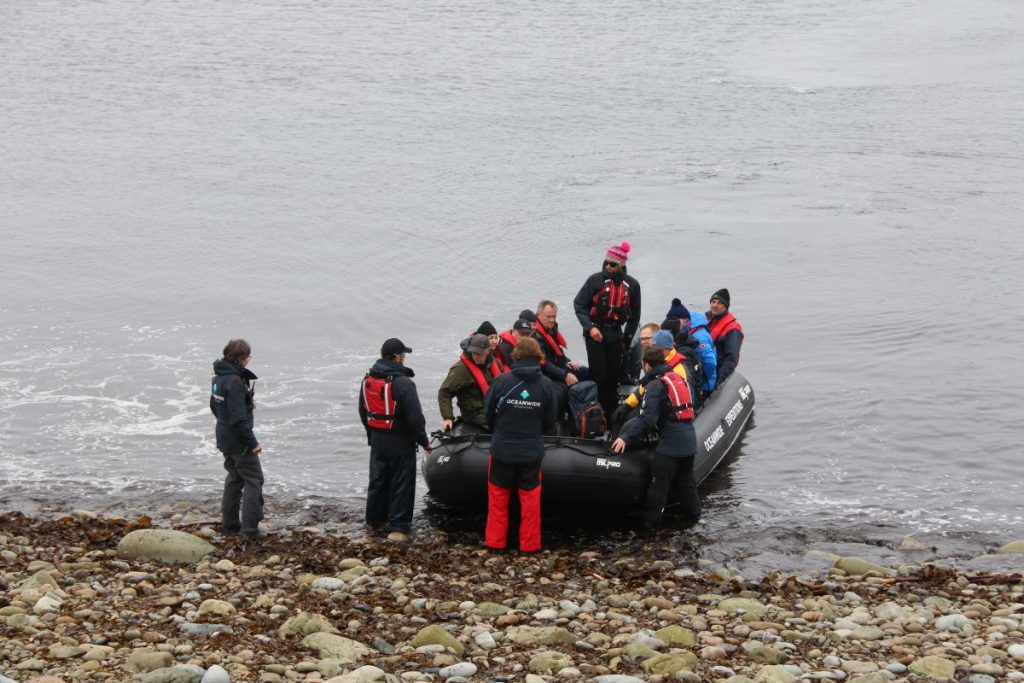
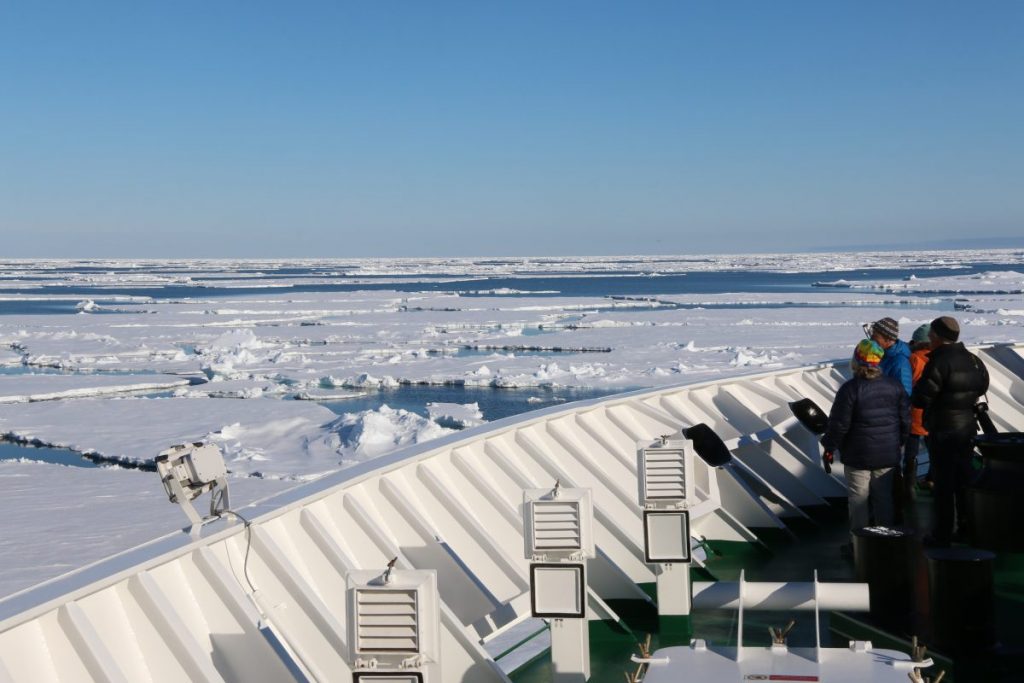

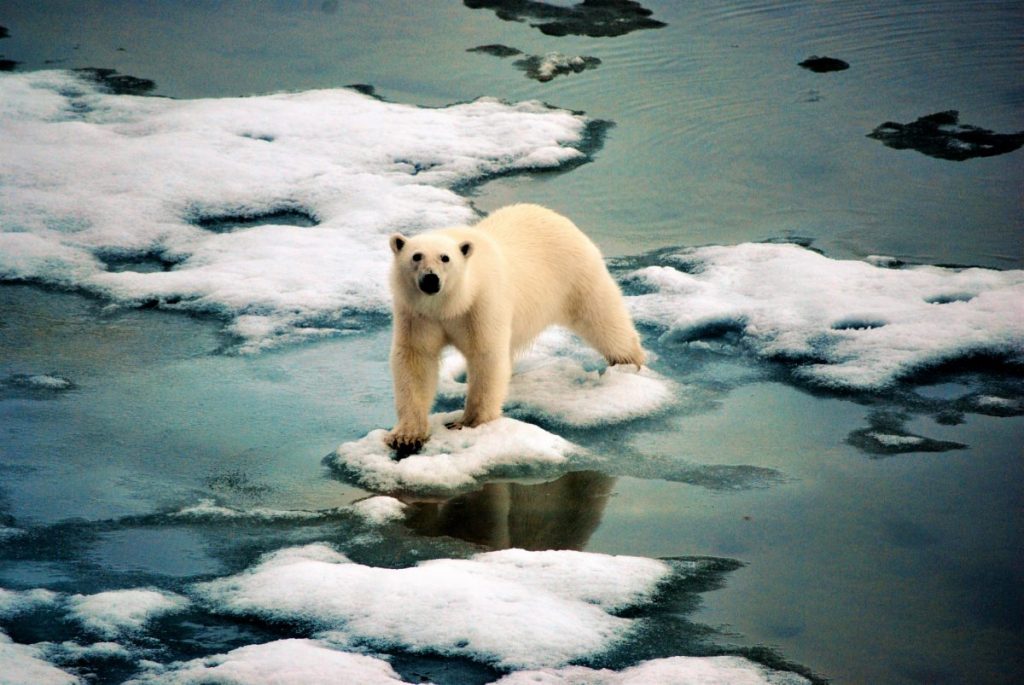


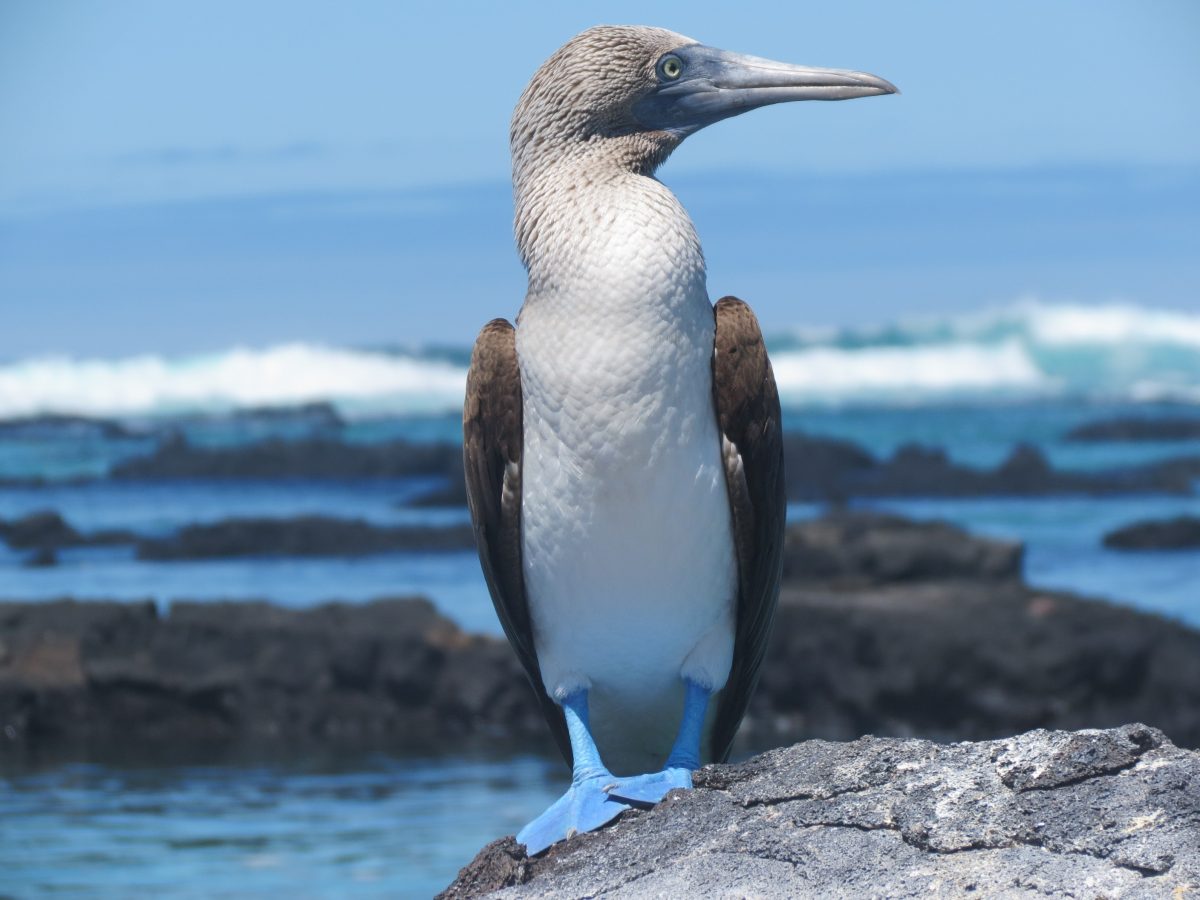

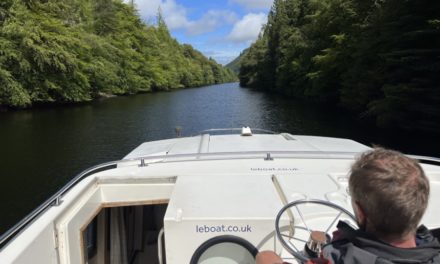
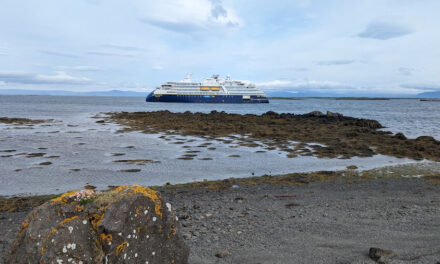








 HEIDI SARNA
HEIDI SARNA











